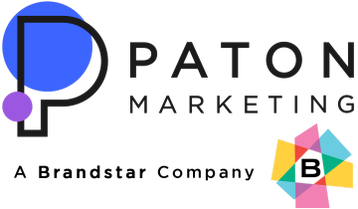Fables, fairy tales, and campfires -the very mention of a ‘story’ brings up memories of our childhood. As essential components of human communication, stories have helped civilizations preserve traditions and shape values.
In digital marketing, stories can empower marketers to cut through the clutter in the marketplace and create messages that resonate with their target audience.
In our series of free SEO webinars, we already talked about
- The marketing carousel and why your business needs it
- Repurposing content for revenue, and
- How to rank your website on page 1 of Google.
The fourth digital marketing webinar in this series is all about ‘blogging for leads’ that takes you through the science and art of leveraging storytelling to convert prospects into customers.
Storytelling and marketing: What’s the link?
Storytelling marketing refers to the use of narratives to communicate the brand message. The goal of storytelling marketing is to evoke powerful, positive emotions in consumers, build a connection with your brand, and inspire them to take the desired action. Storytelling in marketing is all about helping your consumers understand why they need to care about something. An engaging story also humanizes your brand.
As the oldest method of teaching, stories are powerful tools that help children develop perspectives, understand the world around them and strengthen moral values. We now know that the reason for using stories to impart childhood lessons is rooted in science. Researchers have found that the human brain prefers to process, store, and recall information in the form of stories.
While videos or films are popular ways to tell a story, you can also use the written form (blogs), pictures, and audio formats (podcasts) to tell a story. All marketing platforms and touchpoints ranging from social media, website, emails, billboards, and print are amenable for storytelling.
Let’s look at how you can go about weaving stories in your brand communication.
Steps to leveraging storytelling to convert your target consumers
Understand how stories work
According to scientists, many changes happen in the brain when we hear stories:
- Oxytocin flows – Good or bad, human or animal, first-person or third-person, we tend to favor narratives based around characters. The brain releases ‘oxytocin,’ (a neurotransmitter also called the ‘love’ or ‘bonding’ hormone) as we connect and relate to the story’s characters. Studies show that compelling narratives that cause oxytocin release have the ability to affect our beliefs, attitudes, and behaviors.
- Mirroring emotions – It is a well-known fact that powerful stories evoke strong emotions in us such as empathy, happiness, or sadness. This is because certain brain cells called “mirror neurons” are activated. Scientists who studied the brain activity of monkeys found that ‘mirror neurons’ were activated when the monkeys perform physical actions like picking up nuts. These neurons were also activated when the monkeys watched other monkeys pick up nuts. Unconsciously, we tend to mirror the emotions and actions of characters in a story. The characters’ emotions and actions are literally mapped in our brains.
- Syncing of brains – Dr. Uri Hasson, a neuroscientist at Princeton University studied the neurological basis of storytelling and human communication. Using MRI (magnetic resonance imaging), he measured the brain activity of people before and after they heard the same story. While the brains had different activities before the story, the activity became synced, or “aligned” after they heard the story.
- The science of persuasion – Multiple studies have shown that stories are more persuasive than mere statements of facts. For example, a study found that storytelling was an effective approach in controlling the blood pressure of study participants. In the study, 299 African American people with hypertension were divided into two groups. One group received usual care while the study group viewed videos that presented stories of other people with hypertension. Researchers found that those who viewed the stories changed their behavior (adhered to the diet and medication guidelines) and had better blood pressure control.
Scientists also believe that by measuring the amount of oxytocin the brain releases, it is possible to predict whether the listeners will donate money to the cause promoted in the story.

Leverage consumers’ stories
MIT Sloan researchers explored the role that storytelling played in influencing consumer choice by following automaker BMW and Japan-based Suruga Bank Ltd. They found that stories on the brand websites significantly boosted consumer engagement. Stories that originated from the brands’ consumers were particularly powerful in influencing and shaping brand attitudes across social media platforms.
The Suruga Bank study featured a story presented by a well-known violinist, Iwao Furusawa. He described in the video how Suruga Bank helped him achieve his dream of building a second home while he didn’t qualify for a mortgage with other banks.
The researchers found that storytelling from consumers resulted in a 32 percent increase in purchase decisions.
Create a smart content strategy
Content continues to be the king in the world of digital marketing. Well-crafted digital content attracts your potential customers to find and engage with your brand organically.
Plan your content by thinking about your target audience, the content format, the marketing channels, and above all what problem your content will solve. Equally important are the strategies you create for testing and tracking the efficacy of your content.
Our SEO webinar series 2 on ‘Content is King: Repurposing content for revenue,’ is designed to take you through the steps of creating compelling content that converts.
Establish your authority
Before you create stories, it is important to build your credibility so that your potential consumers believe and trust you. While this does not happen overnight, you can focus on
- creating original, high-quality content that can help showcase you as an authority in the industry
- practicing consistency with your content across channels
- not being afraid to experiment with different types of content
- being transparent and accountable
- connecting with influencers and micro-influencers on social media
- customer service excellence
Weave in emotions
Clearly, stories have the power to deliver important information that can help shape the consumers’ decisions and their overall brand experience. As the above studies show, stories have the power to persuade your consumers by evoking powerful emotions. Most purchase decisions are based on emotions rather than logic or reasoning.
So, if you want your potential customers to remember your brand or product, your story needs to engage and evoke the right emotions in them.
Successful marketers leverage this concept and you can see numerous examples of campaigns that are focused on emotions – happiness, self-worth, adventure, connections, family bonding, love, and desires.
Start converting with compelling storytelling
Stories are powerful weapons in your brand’s digital marketing arsenal that can help positively influence brand image, recall, cognitive processing, and the purchase decision.
Our digital marketing webinar series 4 on ‘Blogging for leads,’ has all the tips and strategies you need to weave storytelling into your content and convert your leads.


Anke
Wow, marvelous weblog layout! How lengthy have you been running a blog for?
you made blogging glance easy. The total glance of your web site is great,
let alone the content! You can see similar here sklep online
Astrid
Hey! Do you know if they make any plugins to assist with SEO?
I’m trying to get my blog to rank for some targeted keywords but I’m not
seeing very good success. If you know of
any please share. Appreciate it! I saw similar text here: Hitman.agency
situs alay4d
Wow Thanks for this review i find it hard to stumble on exceptional data out there when it comes to this topic appreciate for the review site
bezplatn'y úcet na binance
Thanks for sharing. I read many of your blog posts, cool, your blog is very good.
Daniela
Hello there! Do you know if they make any plugins to help
with Search Engine Optimization? I’m trying to get my site
to rank for some targeted keywords but I’m not seeing very good gains.
If you know of any please share. Many thanks! You
can read similar text here: Good escape room
China
I have been surfing on-line greater than 3 hours today, yet I by no means discovered any fascinating article like yours. It’s pretty worth sufficient for me. Personally, if all webmasters and bloggers made good content as you did, the web will probably be much more helpful than ever before!
Naomit
Great mix of humor and insight! For additional info, click here: READ MORE. Any thoughts?